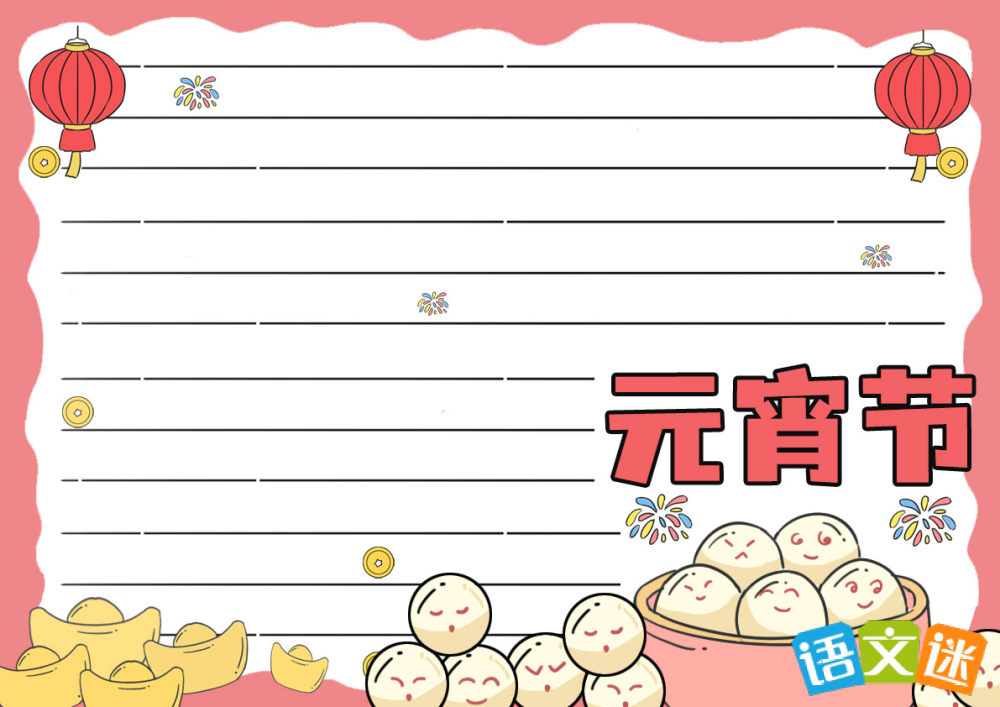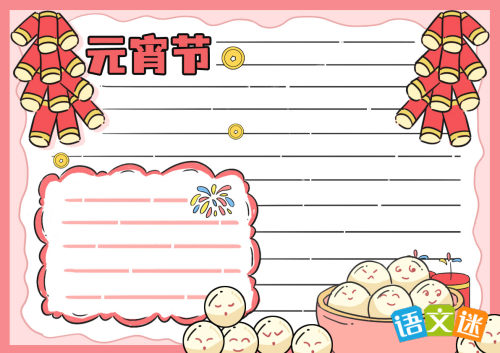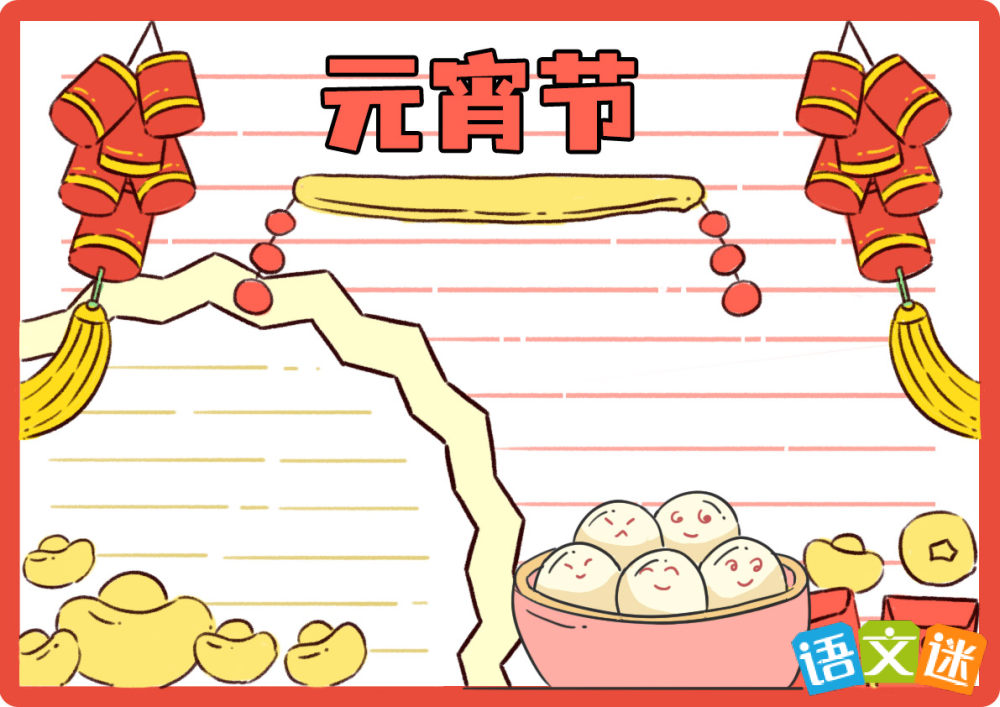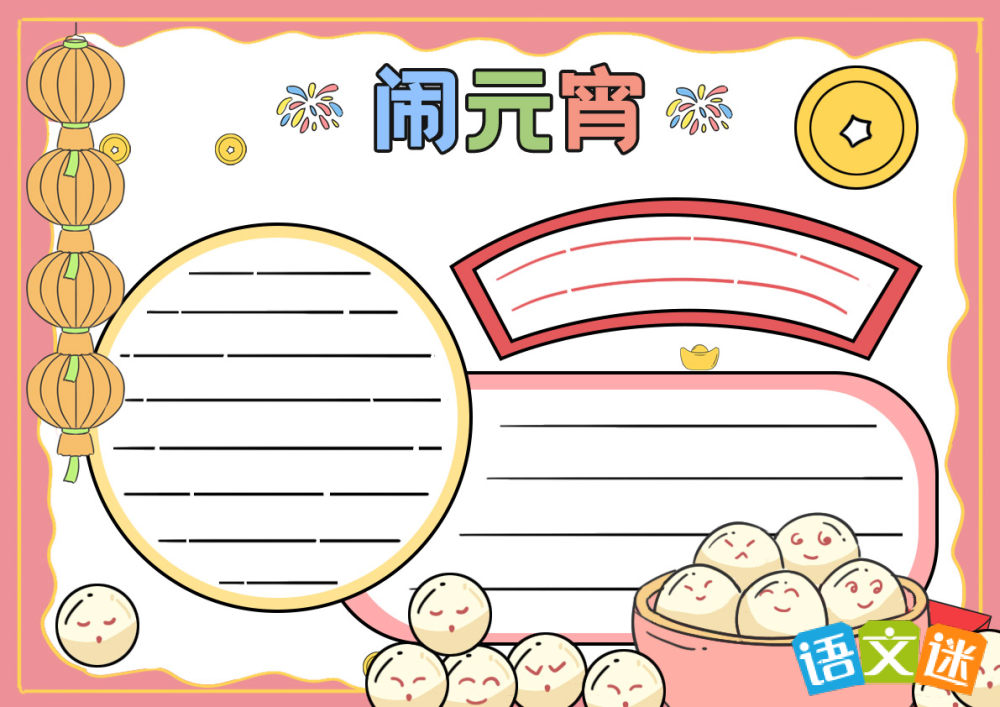元宵节的英文手抄报内容
在日常学习、工作和生活中,大家对元宵节都再熟悉不过了吧,下面是小编为大家整理的元宵节的英文手抄报内容,希望对大家有所帮助。
元宵节的英文手抄报内容





元宵节英文手抄报
the lantern festival falls on the 15th day of the 1st lunar month, usually in february or march in the gregorian calendar. as early as the western han dynasty (206 bc-ad 25), it had become a festival with great significance. this days important activity is watching lanterns. throughout the han dynasty (206 bc-ad 220), buddhism flourished in china. one emperor heard that buddhist monks would watch sarira, or remains from the cremation of buddhas body, and light lanterns to worship buddha on the 15th day of the 1st lunar month, so he ordered to light lanterns in the imperial palace and temples to show respect to buddha on this day. later, the buddhist rite developed into a grand festival among common people and its influence expanded from the central plains to the whole of china.
元宵节英文手抄报
the 15th day of the 1st lunar month is the chinese lantern festival because the first lunar month is called yuan-month and in the ancient times people called night xiao. the 15th day is the first night to see a full moon. so the day is also called yuan xiao festival in china.
according to the chinese tradition, at the very beginning of a new year, when there is a bright full moon hanging in the sky, there should be thousands of colorful lanterns hung out for people to appreciate. at this time, people will try to solve the puzzles on the lanterns and eat yuanxiao (glutinous rice ball) and get all their families united in the joyful atmosphere.
元宵节的英文手抄报内容:
1. 标题(Title):可以使用“Lantern Festival”或“Yuanxiao Festival”,并加以装饰,如画上灯笼、汤圆等元素
2. 介绍(Introduction):
"Lantern Festival, also known as Yuanxiao Festival, is a traditional Chinese celebration observed on the 15th day of the first month in the lunar calendar."
"It marks the end of the Chinese New Year celebrations and is associated with love, romance, and family reunions."
3. 传统习俗(Traditions):
"Lighting up lanterns: Homes and streets are adorned with colorful lanterns, creating a festive atmosphere."
"Guessing lantern riddles: Lanterns often bear riddles or jokes, which people enjoy solving together."
"Eating tangyuan/yuanxiao: These glutinous rice balls symbolize completeness and unity."
"Dragon dance: In some regions, dragon dances are performed to bring good luck."
4. 历史背景(History):
"The origin of Lantern Festival dates back to the Han Dynasty, when Emperor Wen of Han established it as a way to celebrate peace and prosperity."
5. 食物(Food):
"Tangyuan/yuanxiao: Sweet rice dumplings filled with various sweet or savory fillings."
"Other regional specialties such as nian gao (sticky cake) and jiaozi (dumplings) might also be enjoyed."
6. 现代庆祝方式(Modern Celebrations):
"In modern times, the festival is celebrated with light shows, concerts, and family gatherings."
"Some cities hold competitive lantern-making contests and parades."
7. 诗句或祝福语(Poetry & Wishes):
"May the light of the lantern brighten your path and the warmth of family surround you on this joyous occasion."
"Wishing you happiness, harmony, and love this Lantern Festival!"
8. 插图(Illustrations):
Draw or paste pictures of lanterns, tangyuan, dragon dances, and other festival elements to make the poster visually appealing.
9. 边框装饰(Border Decorations):
Use traditional Chinese patterns, lanterns, and tangyuan shapes to create a border around the edges of the poster.
【元宵节的英文手抄报内容】相关文章:
元宵节英文手抄报内容02-21
元宵节英文版手抄报内容12-06
环保手抄报英文内容08-18
春天来了手抄报英文内容04-27
元宵节手抄报内容02-21
元宵节手抄报内容08-30
元宵节的手抄报内容02-23
元宵节手抄报的内容02-22
愚人节英文手抄报内容08-17
国庆节的英文手抄报内容08-29
